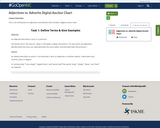
This is an introduction to adjectives and adverbs that includes a digital anchor chart.
- Subject:
- English Language Arts
- Material Type:
- Lesson Plan
- Author:
- Kara Stewart
- Date Added:
- 10/29/2019

This is an introduction to adjectives and adverbs that includes a digital anchor chart.
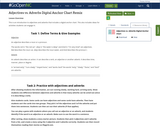
This is an introduction to adjectives and adverbs that includes a digital anchor chart. This also includes ideas for activities students can engage in.
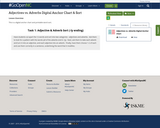
This is a digital anchor chart and printable word sort.

In this lab activity, students will accomplish two sequential goals. The first goal is to understand the law of conservation of energy through an activity where students mix cold and warm water with predetermined volumes and temperatures. THe second goal is to use their knowledge in part one to determine the temperature of hot water with a known volume and an unknown temperature that has been mixed with cold water with known temperature and volume.

Students will discover how the love of music connected two important figures in world history: Benjamin Franklin, an American founding father, and Wolfgang Amadeus Mozart, an Austrian composer. Additionally, students will begin to understand pitch, and how each note is calibrated to create its own unique sound.
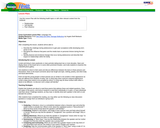
Students will describe the challenge during adolescence to gain peer acceptance while developing one's sense of self, recognize the influence that peers and the media have on personal choices during the teen years, and identify physical and emotional changes that occur during adolescence and describe their impact on relationships within the family.

The students will learn the steps of the goal-making process and use this process to create short and long term goals.

The students will set a long term goal and several short term goals related to the long term goals.
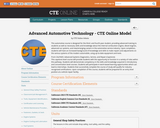
This automotive course is designed for the third- and fourth-year student, providing advanced training to students as well as necessary skills and knowledge about the internal combustion engine, diesel engines, advanced car systems, and new/emerging careers in the automotive service industry. Upon completion, students will have an increased background of knowledge and skills to make repairs and adjustments on the various systems of the modern automobile, using up-to-date equipment and tools.
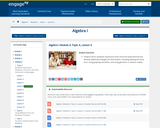
Lesson showing how to factor quadratics specifically when leading coefficient is not 1.
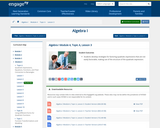
Lesson with application of factoring quadratic expressions and word problems.
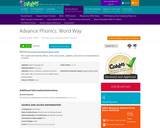
Students will identify affixes, roots, base words, syllables, and variant correspondences in words.

Using a wide variety of nonfiction literature, students learn to sort and categorize books to begin the information-gathering process. Then, working with partners and groups, using pictures and text, students are guided through the process of gathering information, asking clarifying questions, and then enhancing the information with additional details. Students complete the lesson by collaboratively making “Question and Answer” books for the classroom library.

Students will discover the differences in musical tempo between fast and slow. Students will learn to use the
correct musical terms to describe the tempo of each piece. Students will use streamers and their bodies to
show at what tempo each piece is played.

Students will discover how to read music notes in the treble clef and then will learn to perform simple songs on
xylophones, through reading the story Freddy the Frog and the Thump in the Night by Sharon Burch.

In this guide to Saul Bellow's post war novel, The Adventures of Augie March, students will learn the background of the book as well as the author, and deepen their understanding of the text through indepth discussion questions.

The Adventurers of Sojourner presents a third-person narrative account of the Mars Pathfinder mission, which included the deployment of a small science rover named Sojourner. In this CCSS lesson, students will explore this history through text dependent questions, academic vocabulary, and writing assignments.

Worksheets and lessons on adverbs and adjectives for various reading levels.

Students become more aware of the language and techniques used in print advertising, as well as the impact of advertising on their daily lives. The unit will focus on three key media literacy concepts: construction of reality, representation, and audience. Students will learn to analyze the format and structure of advertisements, differentiate between information and selling, and learn about target audiences.

Advertising is one of the most powerful forces shaping our ideas, culture, and behavior today. To help students become smart shoppers, this lesson teaches students to critically examine advertisements and identify the underlying messages they convey. Students are given the opportunity to express their creativity by developing their own advertising campaign.